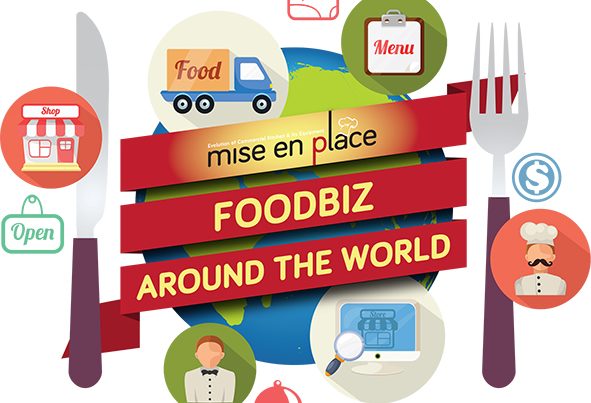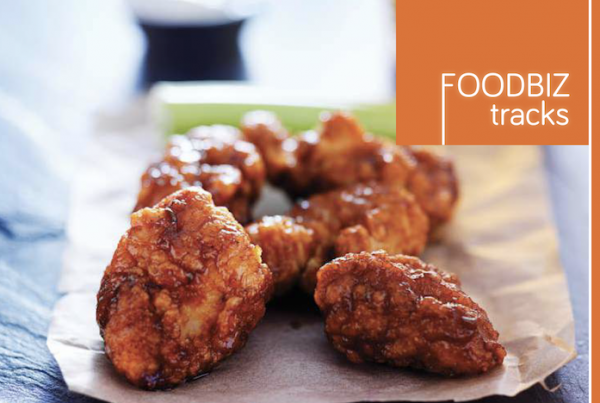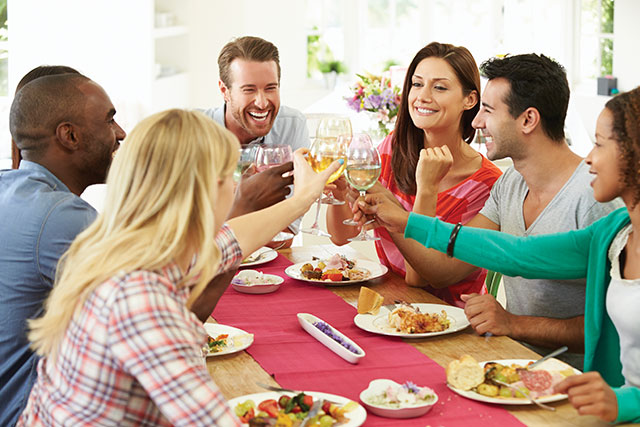
“Want to go for a drink?” or “let’s raise a toast to celebrate!” represent how beverages play an important role in our social setting. In fact, the activity of drinking has been an important part of socialising since the time when ancient Greeks would gather in a “symposium” to drink; over serious discussions or simply indulging. History showed that a similar concept called the “convivium” was regular in Ancient Rome as well. It is no wonder that liquids are given its own pedestal in the “Food & Beverage” industry. Beverages have always been, by default, an accompaniment to meals but in certain settings, drinks are the main attraction with food being secondary. Like its food counterpart, beverage also has categories hence in this Business Sense, we look at beverages in restaurants, what constitutes the specialty drinks category and a special focus on bars due to its drinkcentric proposition.
RESTAURANTS AND ITS DRINKS
An establishment’s drinks menu is usually in line with its type of food. Fast-food always comes with soft drinks and fruit juices from the drink dispenser. It can also offer coffee and tea but would be of the instant variety. A fast casual restaurant could offer a small selection of each beverage segment such as popular alcohols and cocktails, freshly squeezed juices, coffee and tea. There are also restaurants that have a drinks menu vast enough to match its food menu so there is surely something for everyone. In these instances, a separate menu helps project your restaurant’s drinks are unique and deserves equal attention. Customers should be able to find types of champagne, house wines and wines from selected regions, various creations from the mixologist and nonalcoholic offerings.
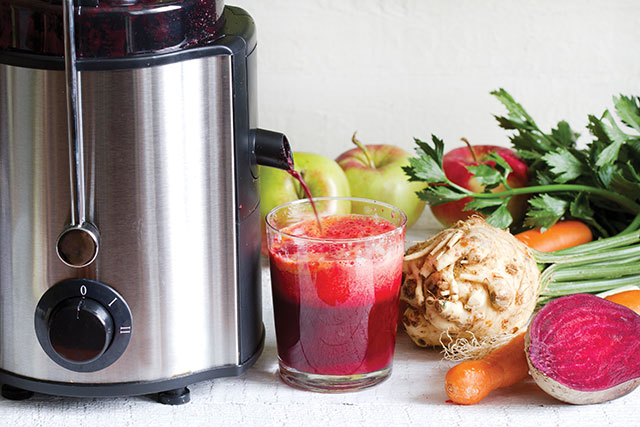
SPECIALTY DRINKS
The general reference to this category would be drinks that can be the sole business proposition, operated on a smaller scale such as in a kiosk with food not being necessarily offered – juices, coffee and even tea come to mind.
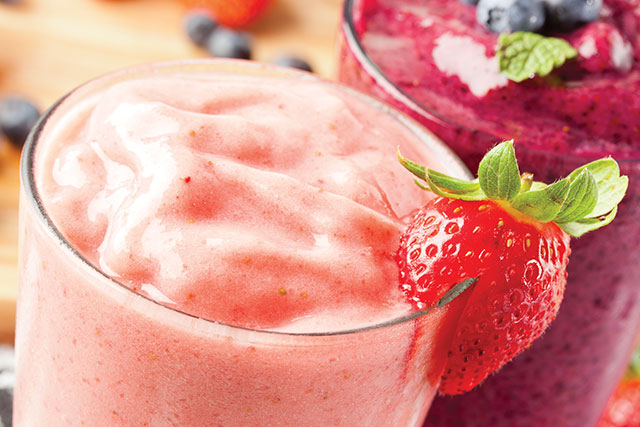
Juice business is a fairly uncomplicated operation, usually requiring the minimum of a kiosk. An industrial capacity blender is recommended for speed in breaking down ingredients and the ability to cope with the volume. Its success lies in the quality of fresh ingredients and the research team to find out which ingredients can produce terrific flavours with healthful properties. The industry would categorise it as “betterfor-you” (BFY) beverages that are prepared fresh and without additives, right before the customer’s eyes. Whether you are looking to juice for detoxification, boosting your immune system or a pick-me-up, there is one that fits the bill.
The latest in juicing is cold-pressed varieties where fruits and vegetables are put through a low revolution-per-minute (RPM) grinder that makes them into pulp. In pulp form, fibres of the ingredients are broken up to easily release the juice. At the end, the pulp will still be heavy with juice which is then squeezed dry in a powerful press. What is the difference between the low RPM machine to a conventional juicer? The type of grinder use ensures that ingredients are not put through a powerful blade that is often too extreme for the delicate items. Also, due to the high speed of a regular juicer, excessive oxygen is incorporated into the mix, resulting in rapid discolouration if not consumed immediately. Most cold-pressed juices can be bottled and stored for about 48-72 hours without preservatives and not lose its nutrients, minerals or oxidise. Although on the pricier side, what-you-see-is-what-you-get.
Smoothies are popular for its thick viscosity making it an unfussy meal replacement option. Its filling element comes from soya milk, yoghurt or milk blended with fruits and cer tain vegetables. To cater to more markets, you can even find protein shakes that come with an addition of whey, protein powder or niche items like chia seeds. For an occasional indulgence, we do not forget milkshakes where milk or ice cream is blended with equally rich flavours like butterscotch, caramel, chocolate sauce or syrups.

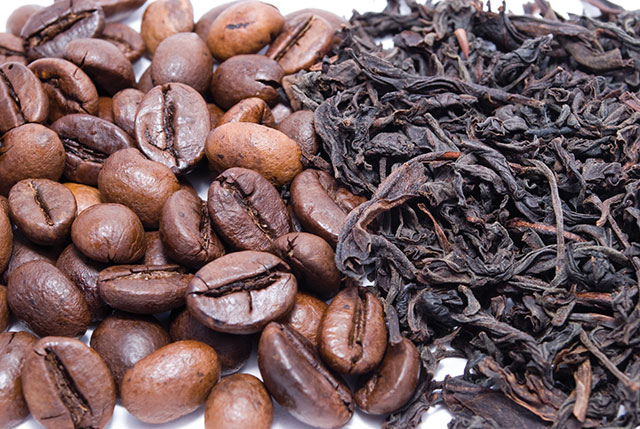
The mention of coffee and tea inadvertently links to the explosion of the café culture in recent years. Interest in the bean and greater education avenues of coffee has elevated coffee consumption and spawned many ideas in serving up a cuppa. The market segment plays to the diverse audience demands; convenient sachet mixes, canned and bottled coffee, tools for brewing your own cup at home, range of coffee machines catering to various businesses to niche offerings like the siphoned and drip coffee. The small bean that packs huge potential, coffee is in its element right now and with plenty to explore, it will have comprehensive coverage in BUSINESS SENSE soon.
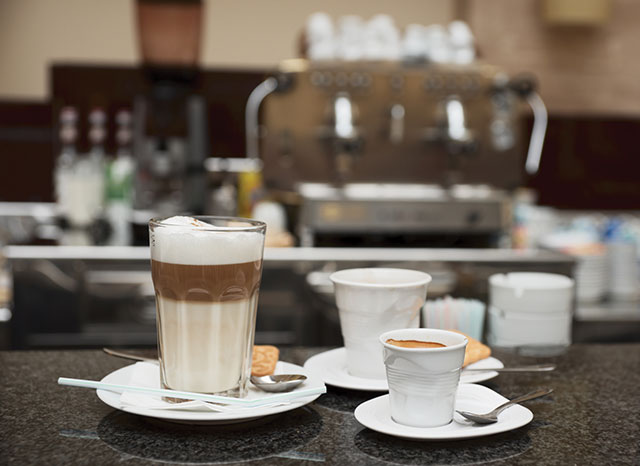
Tea drinkers are not to be sidelined as well. Although over 290 billion litres was sold in retail and foodservice making tea the world’s most consumed beverage, its global retail value registered just US$40.7 billion compared to coffee’s US$75.7 billion (Euromonitor). Also according to Euromonitor, coffee has forged ahead “due to the luxur y and lifestyle association it has cultured due to the global coffee shop boom” but tea’s most unique selling point lingers primarily in its versatility where it can be mixed for different flavours and their functional benefits. Foodservice operators can capitalise on this perspective as consumers are more aware of putting good things into their body. On a side note, demand for premium loose leaf teas are going upward due to the high-end feel it exudes as consumers display their knowledge in the characteristic of tea and are keen to experiment on tea fusions (Thomas Ridley Foodservice). Investing in the tea segment is also inexpensive without the need for machinery for all it needs is a tea set and the right temperature of water. Restaurants on the luxury side might select to have a in-house tea expert to engage with its discerning consumers.
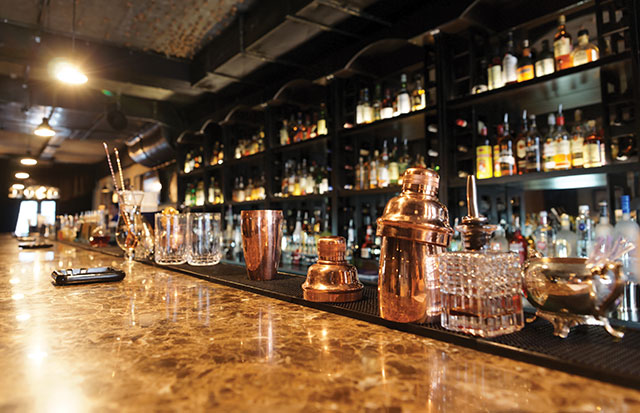
THE WATERING HOLE (BAR)
It has its derivation from the word ‘barrier’ where a corner of the room is devoted to the sale of alcohol. In Italy, “bar” is defined as a room serving alcoholic and non-alcoholic (coffee and its variants) together with simple sweet and savoury finger foods. Bars differ in their operations according to its settings:
• Dispense Bar: usually in restaurants serving alcohol with meals. Tends to keep only sellable items.
• Wine Bar: exclusive to carrying wines, mostly expensive variants. Targeting wine connoisseurs, guests are given free samples before purchasing.
• Cocktail Bar: set in luxury lounges where service staff take the guest’s order and bring the drink from the main bar.
• Pubs: a word derived from “public house” licensed to sell alcoholic beverages, pubs were mainly owned by breweries but are no longer limited to such ownership today.
• Sports Bar: where people gather to watch live screening of sport events; although not set in stone, guests at these bars prefer beers.
SETTING UP A BAR
According to Tri-Arc consultants, however you may want to project the bar as, remember the essence of a bar is having a wide variety of drinks. Mixology is important too, like what a chef is to a food-centric place, a bartender’s knowledge and skill in creating drinks gives the bar an edge. Also, what is the crowd’s preference? For example Tri-Arc told us that sports bars in Bangkok are very popular; so think about what is popular in your area of operation.
All bars will require a liquor license and licenses requirement could vary among regions. For example, you might be able to apply a license to serve all kinds of alcohol but in region B, licenses could be restricted to only certain types of drink. To streamline, we will look at setting up a full service bar which serves hard liquor, wines and beers. Firstly, how much space you want to allocate for the bar? Many bars have bar stools to allow customers to interact with the bartender, ideal for patrons who just want drinks. The space between bar stools should ideally be two feet apart for comfort. Some restaurants with bars choose to place the bar at the entrance so that it can become a waiting area as well. If you anticipate high volume during mealtimes, a bar in the centre of the restaurant could make access easier. Some operators might want their diners to have a quiet dining experience thus moving the bar to the back of the restaurant is more suitable. A bar should have three parts:
1.Front Bar
• Normally 42-48 inches high and 16-18 inches in width.
• Works as the meeting point for customers and bartenders.
• Supported by a vertical “bar die” to separate the customer from the work area.
• Its surface should be water and alcohol proof and easy to clean.
• Glasses for different kind of drinks are arranged in a glass rail (usually custom-made) within the bartender’s reach.
• High stools should have rungs for an easy-to-reach footrest no matter the customer’s height.
2.Under Bar
• Placed under the front bar of the bartender’s side therefore workflow has to be considered when designing it.
• Design factors include kind of drinks served, equipment needed and type of mixes that need to be stocked.
• Can be segmented into various workstations. Every station is assigned with liquor, mixes, ice, blender, glasses and garnishes.
• ‘Well brands’ are house brands served to guests who do not specify their brand preference of items like gin, vodka, scotch or bourbon.
• ‘Call brands’ refer to specific brands customers will ask for.
• A storage area is required to keep utensils and reserve stocks of drinks with a hand washing station and waste disposal area.
3.Back Bar
• Hold liquor bottles and glassware to enhance the bar’s appearance.
• Often lined with a mirror to reflect the bottles.
• May also have a display rack set over the storage cabinet or overhead slotted racks for stemware which wines are served in.
• Design should blend with the bar’s overall décor and be functional.
• Can be used as a storage space, refrigerated cabinet or a placing area for special equipment like bottle coolers, glass froster or beverage dispenser.
• Ensure a minimum of 8 feet between back of the bar to the front of the front bar for comfortable movement.

Pisco Bar’s signature Peruvian Cebiche & Chilcano de Pisco cocktail.
THE BAR MENU
The fact that most bars would likely stock liquors of the same brands, it is common for bars to have their ‘signature drink(s)’. This item should identify with the vibe and personality of your bar. An example is Pisco Bar Kuala Lumpur’s Chilcano de Pisco made with pisco, ginger ale, lime juice and dash of bitters. Pisco is a local Peruvian grape brandy that is used to create a variety of cocktails in its bar.
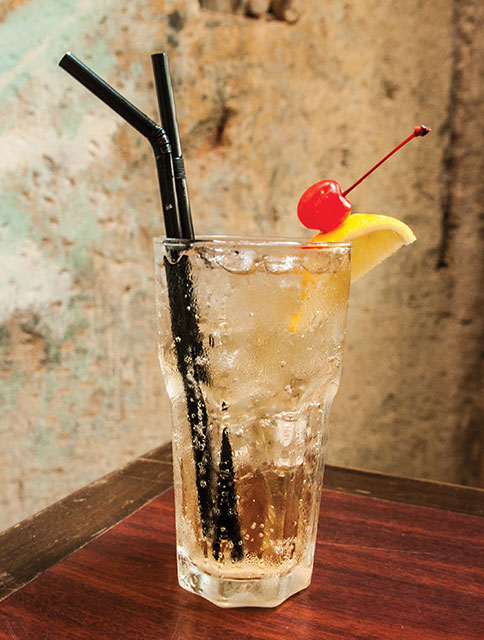
Pisco Bar’s signature Peruvian Cebiche & Chilcano de Pisco cocktail.
Food is necessary although you are a beverage-centric establishment. Previously, bar operators provided the bare minimum; foods that are simple and most importantly with a salty edge as it keeps patrons drinking. Although the ‘salt’ element is still a factor, we see that bar food is no longer just a bowl of chips, nuts or deep fried finger food. Today, most bars try to introduce special cuisines that reflect its identity. Nicolas Fraile of Pisco Bar is enthusiastic to introduce Peruvian cuisine to Kuala Lumpur, partly in line with the heart of Pisco and is a good match with alcohol (read more about Pisco Bar next).
However, if you wish to offer main meals and desserts, the dining area should also incorporate seating arrangements adequate for meal times; it would not be easy to eat a full meal on a bar stool and countertop tables. With restaurants also offering a complete bar experience, customers now have so much cuisine options to pair with their alcoholic beverage.
Reference:
http://www.foodservicewarehouse.com/education/bar education/c33179.aspx
http://fnbservicesem6.wordpress.com/2014/02/19/baroperations/ http://restaurants.about.com/od/stockingarestaurant/ht/Bar_Setup.htm
http://en.wikipedia.org/wiki/Drink
http://www.pitch.com/FastPitch/archives/2010/05/10/the-perfect-bar-food-menu
http://www.usfoods.com/your-business/tools-and-ideas/chill-out-with-smoothies–shakes-and-frozen-drinks.html
Dual Opportunities for Tea in Retail and Foodservice. Euromonitor International. http://blog.euromonitor.com/2013/08/dualopportunities-for-tea-in-retail-and-foodservice.html
The UK has become ‘a new nation of coffee drinkers’. Thomas Ridley Foodservice. http://www.thomasridley.co.uk/article_hotdrinks.html







